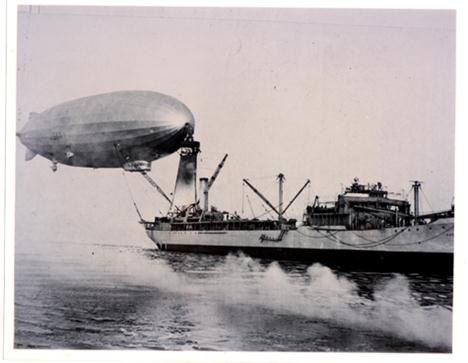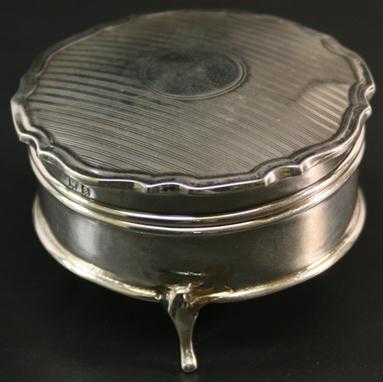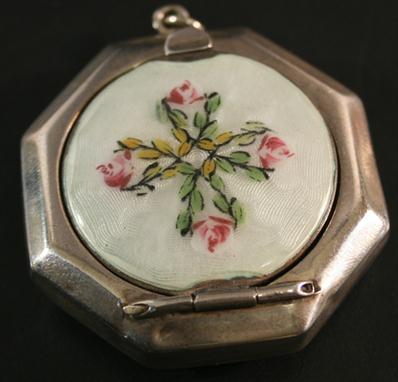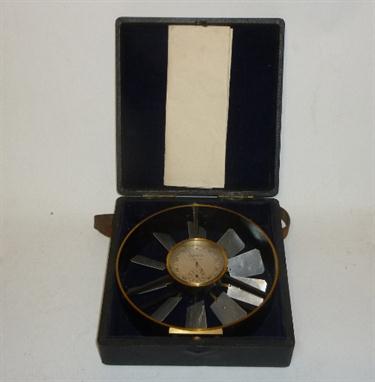186062 Preisdatenbank Los(e) gefunden, die Ihrer Suche entsprechen
186062 Lose gefunden, die zu Ihrer Suche passen. Abonnieren Sie die Preisdatenbank, um sofortigen Zugriff auf alle Dienstleistungen der Preisdatenbank zu haben.
Preisdatenbank abonnieren- Liste
- Galerie
-
186062 Los(e)/Seite
A Tipp & Co tinplate clockwork lithographed airship toy ‘Graf Zeppelin DLZ 127’. 63cm. In gold tinted silver finish with dark blue line detailing, ‘Graf Zeppelin’ and ‘DLZ127’ to sides, large yellow two bladed propeller to rear, two hanging loops to top, four engine pods with propellers, battery powered light within the control cabin. Clockwork action in working order but key missing. Boxed, some age wear. Zeppelin VGC minor wear only. See Plate.3
A Marklin tinplate clockwork ‘Graf Zeppelin’ toy. 41cm. Painted in silver, ‘Graf Zeppelin’ in red and ‘D-LZ 127’ in black to one side only. 5 engine pods and control cabin to the front. Clockwork motor in working order. Fitted with a large alloy propeller. Basically QGC-GC some age wear/light rusting overall. Propeller bent. See Plate.3
A North American produced by MARX tinplate clockwork airship toy. 27cm. In silver painted tinplate, with red compartment and blue engine pods. Central large powered propeller, with fixed key to rear, clockwork motor in W.O. Boxed, worn/damaged. One engine pod loose. Zeppelin. GC some light rusting. See Plate.4
A rare ORO of Brandenburg Germany clockwork tinplate airship. In the early style with its canopy in cream with red lines, red rear fins, engine pods (2) and central compartment. Two simple gondolas, hanging hook to top centre, fitted with a green celluloid propeller on a red painted frame. Clockwork motor working. GC minor wear/scratching. One propeller blade missing. See Plate.4
A rare ORO of Brandenburg Germany clockwork tinplate airship. 26.5cm. In the early style with its canopy in cream with red lines, red rear fins, engine pods (2) and central compartment. Two simple gondolas, hanging hook to top centre, fitted with a green celluloid propeller on a red painted frame. Clockwork motor A.F. VGC minor wear, some splitting to propeller. See Plate.4
U.S. Airship photographs. 14 photographs, 25cm x 20cm, of U.S. airships including ‘Los Angeles’, ‘Acron’ and ‘Macon’. Together with close-up photographs of the Sparrow-Hawk bi-plane carried on ‘Macon’, 2 crew members with a Maybach 12-cylinder engine, a navigating officer and ‘Los Angeles’ moored to the ‘Patoka’. VGC. See Plate.28
The 1914-15 star awarded to Major G H Scott, who took overall command of the Airship R-101 and became a casualty of the disaster, (reverse impressed Flt. Lieut. G.H. Scott R.N.A.S.). Extremely Fine, together with a reprint photo of the recipient and biographical notes, also entitled to C.B.E, A.F.C., British War and Victory medals. Ex Hal Giblin collection. See Plate.32. Note: Regarded as some as being “The greatest British Airship Commander” Major George Herbert Scott was born in 1888. In 1908 he was with the R.N. Engineering College, Keyham. In 1914 he joined the RNAS and was commissioned Flight Sub Lieutenant in October. His first service was with the airship Eta at Farnborough. In 1915 he transferred to Barrow Airship station where he commanded the Parseval airship P4. The following year promotion brought him command of the Anglesey station. In 1917 he was appointed Captain of the rigid airship R9 (Britain’s first flying Rigid airship) where his ability came to the fore and included a night time landing. He next took the appointment as Experimental Officer Airships at Pulham in Norfolk. On 1st April 1918 with the formation of the R.A.F. Scott was promoted Major; an award of the AFC in the New Year’s Honours followed.In 1919 Scott was the first choice as Commander of the R-34 when she completed her historic first return flight across the Atlantic, from East Fortune in Scotland, over to Long Island, and then back to Pulham. The outward journey (the first ever flight from Britain to the USA) was not without incident, R-34 had to negotiate two electrical storms and ran dangerously low on fuel. During the return trip the airship suffered from engine problems but still managed a time of exactly three days, three hours and three minutes. The Air Ministry diverted the R-34 to Pulham rather than their home base in Scotland where, by contrast with their American landing, only a few reporters and officials were there to greet them as an RAF band struck up “See The Conquering Hero Come”. For this venture Scott was awarded a C.B.E. regarded by many as poor recognition for what had been achieved, (two weeks before R-34 left Scotland Messrs Alcock and Brown completed their single crossing from Newfoundland to Ireland and were given Knighthoods. Of the 30 on board R-34 only 10 received honours: 4 other officers were awarded the Air Force Cross and 6 crew members the Air Force Medal (See lot 615 in part 1 of this collection for the AFM group to Flt Sgt Gent); the US Navy, recognising the feat presented all the officers with platinum cigarette cases, the remainder of the crew were not rewarded except by the New York Fire Department who presented each of them with a silver propelling pencil. The British Government’s view was that the country was war weary, resentment followed military expenditure and the whole business was played down, so much so that a proposal by the Secretary of the US Navy that the crew members should each receive the US Navy Cross was shelved. Corporal R.J. Burgess, a rigger on the airship, was later heard to remark “Seven thousand miles for a b****ing pencil”). In 1920 Scott joined the Civil Aviation Department at Pulham as Senior Flying Officer; and thence to the Royal Airship Works at Cardington. In 1924 he was appointed Officer in Charge of Flying and Training, RAW Cardington. In 1927 he went to Canada to advise the Canadian Government on Airship base selection. In 1930 he was appointed Assistant Director of Airship Development (Flying).The R-100 and R-101 were much larger vessels than previously employed and required new Mooring Towers (these were to Major Scott’s design and allowed the airship to move with air flow). Scott had seniority over Captain Booth during the R-100’s flight to Canada in July/August 1930 and during this flight Scott made a decision to fly through an electrical storm rather than go round it despite, on this occasion, having ample fuel, this action earned some criticism from N.S. Norway (Author Nevil Shute) who worked on the construction of the vessel and travelled on this voyage, and who, in his autobiography “Slide Rule”, branded the decision “reckless” although acknowledging Scott as “a brave and likeable man”.Two months after this flight we find Major G H Scott in command over Captain H C Irwin (see lot 612 in part 1 of this collection) on the ill- fated flight to India of the R-101 when his glittering career was ended in the smouldering remains at Beauvais.
A highly emotive group of medals and ephemera relating to Arthur Victor Bell, Engineer and survivor of the R-101 crash comprising Three: British War, Victory medals (60736 2 AM, A.V. Bell, RAF together with miniature BWM and Victory; ISM, Elizabeth II issue in original case (Arthur Victor Bell) with award document dated 30th September 1960; and an HM silver R.A.O.B jewel of Coswick Lodge, reverse engraved “Presented to Bro. A.V. Bell C.P. for Services Rendered Aug 1932”. Average GVF. Sold together with an extensive archive of letters, photos and other documents, the highlights being I) Career: Certificate of Employment for WWI, 2 handwritten letters from G. Herbert Scott giving Bell a reference (11th June 1922) with a follow up apology (25th June 1922) stating “I am extremely sorry I have not sent on your recommendation sooner, I wrote it out some time ago and was under the impression it had been sent off….”; a duplicated letter offering employment at the Royal Airship Works, Cardington, Civil Personnel as Engineer @ £3/15/- per week, signed in ink G. Herbert Scott; several letters from the Air Ministry certifying Bell licensed to act as an Aircraft Engineer (1925) and other letters, copy of employment record up to 1955, etc.2) R-33 : a pencil written 2 side foolscap resume commencing “Aug. 18th 1921 arrived at Cardington with H.M.A. R-33” up to the end of WWII and in which he describes the R-33 breakaway thus: “April 16th R33 broke away from the mooring mast in a 70mph wind & we were blown across the North Sea to Holland but we got back again under our own power and landed back at Pulham being able to say that we had flown to Holland backwards…” (not signed but believed to be in Bell’s hand); an invitation card to Bell 30th April 1925 celebrating “the glorious achievement of The crew of the R-33 on 16th and 17th April 1925” (breakaway flight); 2 R33 Xmas cards, list of R33 clothing returned by Bell in 1926; a ticket and menu for the R33 Re-union Dinner, Bedford 1924, the menu cover with an amusing cartoon of the “airship” bearing anchors, coaching lamps, spring buffer, rigging with caption “All adrift again”, reverse signed by Bell and over 30 other guests including G. Herbert Scott, H. Carmichael Irwin, Harry Leech, F. M. Rope etc; a second R33 annual dinner menu, bearing a small photo of the airship on the cover, and again signed by many including Scott, Irwin, Gent etc3) R-101 related paperwork: a most poignant Post Office Telegraph stamped Bedford 5 Oc ’30 from Beauvais to Mrs Bell simply stating “Quite Safe = Arthur”; 2 RAF Message Forms 818 to Mrs Bell, the first stating “The Air Ministry deeply regret to have to inform you that HM Airship R101 was lost over France about 2am this morning and A.V. Bell is reported saved”, the second: “The following message was received from the Daily Express representative who visited your husband in hospital this morning “Don’t worry at all, I am quite OK. Shall be home as soon as possible, Arthur” “, both these messages bearing the stamp of the Control Room, Royal Airship Works, received 5th Oct 1930 although no actual time shown; a Post Office Telegraph stamped London 6 Oc ’30 “Husband arrives London tomorrow night. Will wire time of arrival then. Vice Consul”; a card to admit Mrs Bell to the Platform at Victoria Station at 1.40AM on 8th October to welcome her husband home; a postcard from Beauvais from Bell to his wife showing where he was staying with the message “ ..I am OK, some of the boys are burnt a bit but I am only scratched…; an invitation to the unveiling of the Ensign of R101 and memorial tablet at Cardington Church August 1931 and an Order of Service for the same; an RAOB Memorial Order of Service, Cardington Church, Oct 6th 1935. (One can only imagine the roller coaster of emotions Mrs Bell would have experienced at this time. Presumably she would have heard of the crash, then received the Air Ministry forms and telegram , but, on learning of Arthur’s safety she would, no doubt, be unable to show her relief knowing 48 other families in the neighbourhood would be grieving).(4) Personal papers etc include letters, Certificate of Membership of R.A.O.B, Xmas cards, memorial card for his mother Esther 1925 and his driving licence, various photos including 2 of R101 crew, and one of Bell cutting a lonely figure carrying his wreath to the service at St Paul‘s. It must be appreciated that some paperwork shows wear and some letters etc split along the folds See Plate.32. Note: Arthur Victor “Ginger” Bell, born August 31st 1898. Employed at the National Steam Car Co Chelmsford, Essex as General Engineer Youth in the Fitting and Machine shop from Sept 1914 to January 1917 when he left to join the forces. Served with the RFC February 1917 to April 1918, then, on formation of the RAF April 1918 to April 1921. Transferred to Class E Reserve, served overseas France and Germany June 1918 to November 1919. He then joined the Civil Aviation Traffic Office with Airship Flying Experiments as an Engineer Airship Crew from April 1921 to November 1922 and left at the cessation of Airship Flying. Following a spell as Engineer at the Chelmsford Pumping Station and left in June 1924 to return to Airship flying and went back to the Royal Airship Works, Cardington as Engineer (Airship Crew) and C/H Winch Section.Bell, in his capacity of engineer, was aboard the R101 in an engine gondola slung about 20 feet below the hull aft. At the 2.00 a.m. change of watch on the airship Bell was to be relieved by Joe Binks. Binks had to be roused from his bunk to take his watch and arrived about 3 minutes late for duty, whilst their change over took place the airship dived, levelled out and dived again crashing in the side of a hill. Had Joe Binks relieved Bell on time there is no question the latter would have lost his life. Fate played her hand a second time when a water tank overhead burst extinguishing the flames enough to enable the two to get clear with only minor burns, and, with Harry Leech, they were able to take part in the sombre parade on 7th October at Beauvais where they walked behind one of the carriages. Following the crash of the R101 Bell remained at Cardington were he was employed overhauling transport for the RAF. His resume states “Late in 1931 R100 was sold for scrap & broke up in No 1 shed, that put an end to Airships in this country. We carried on experiments with balloons which we were flying at over 20,000ft. In 1933 Cardington again became busy this time with Aeroplanes and by 1936 every where was filled with Air Frames for storage…In 1939 the Aeroplanes left Cardington & Balloons took over in a big way & Cardington became the Home of the Balloon Training Unit where all Balloon Operators, men and women, were trained for the Balloon Barrage all over England for of course that year war came. We became BDE Balloon Development Establishment & done (sic) all the experiments for Balloon (sic) of all kinds.… At the latter part of (the) war when the Germans started sending over his flying bombs Balloons were again in great demand and BDE made all the gear at Cardington to hang on the Balloons for catching Flying Bombs…” Following the war Arthur remained at Cardington until his retirement and worked on the airship Bournemouth in 1950.Arthur Bell died on 21st December 1973 and, as was his wish, was buried in Cardington Churchyard, close to his pals from the R101.
A TIN PLATE MODEL of a live Static Traction Engine on integral stand, the horizontal boiler with water level and pressure gauge, drain cock, whistle and safety valve, on brick effect tinplate housing with conforming chimney, the spirit tray powering a single cylinder horizontal engine, unmarked but probably Marklin. 42cm x 37cm Condition Report: Used condition with corrosion to boiler and base, viewing advised.
A STERLING SILVER PARKER 75 PEN SET comprising a ball point and fountain pen, each with engine turned texture, marked `Sterling Silver Made In USA` along with 925 and London import mark, held within a branded leather covered case. 46grams(total) Condition Report: Pens appear ok, the case with scuffs losses and staining.
A SILVER TRINKET BOX of hinged circular form, having a hinged engine turned top with pie-crust rim and material lined interior, the plain body on three cabriole type legs, rubbed silver marks. 4cm(h) x 6cm(d) 80.8grams(total) Condition Report: Hinge and one leg repaired, some minor damage to other legs, viewing advised.
Gent`s Edwardian full hunter silver pocket watch, by Thos Russell & Son, Liverpool, "not in working order", white dial with Roman numerals, seconds dial, hand missing from seconds dial, engine-turned pattern to front & back, front also has monogrammed garter shield cartouche to centre, back inner case presentation engraved 1907, h/m Chester 1901 (3.46oz gross)
Gent`s open faced silver pocket watch, by `Kendal & Dent, London, Makers to the Admiralty` "not in working order", white enamel dial with black Roman numerals, gilt hands, seconds dial, Swiss made movement, engine turned pattern with garter shield cartouche to back, inside back case stamped `0.935` (3.99oz gross)
Silver serviette / napkins rings, pair of matching octagonal engine turned rings with monogrammed cartouche, h/m London 1932 & two circular rings, one with pierced pattern, the other with foliate engraving & monogrammed cartouche, h/m Birmingham 1916 & 1927, three in average condition, pierced ring in poor condition (4) (4.02oz)
-
186062 Los(e)/Seite


















































